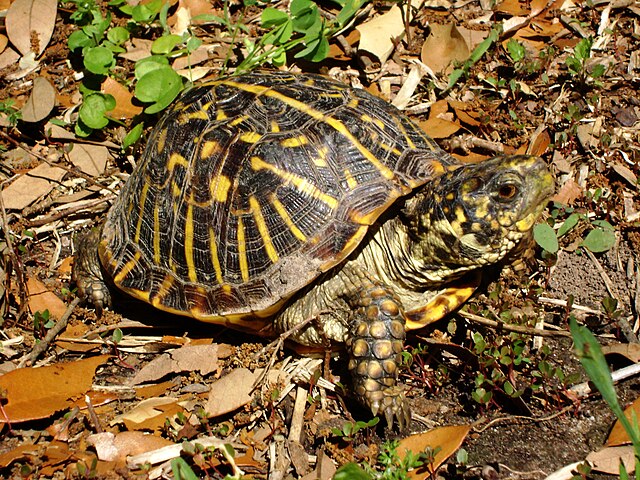Box turtle is the common name for several species of turtle. It may refer to those of the genus Cuora or Pyxidea, which are the Asian box turtles, or more commonly to species of the genus Terrapene, the North American box turtles. They are largely characterized by having a shell shaped like a dome, which is hinged at the bottom, allowing the animal to close its shell tightly to escape predators. Furthermore, the two genera are very different in habitat, behavior and appearance, and are not even classified in the same family. Even though box turtles became very popular pets, their needs in captivity are complex and the capture of turtles can have serious detrimental effects on the wild population.
Box turtle (Terrapene carolina carolina).
Mating battle of Terrapene carolina
Terrapene ornata.
Indo-Chinese box turtle Cuora galbinifrons
Turtles, or testudines, are reptiles of the order Testudines, characterized by a special shell developed mainly from their ribs. Modern turtles are divided into two major groups, the Pleurodira and Cryptodira, which differ in the way the head retracts. There are 360 living and recently extinct species of turtles, including land-dwelling tortoises and freshwater terrapins. They are found on most continents, some islands and, in the case of sea turtles, much of the ocean. Like other amniotes they breathe air and do not lay eggs underwater, although many species live in or around water.
Turtle
Head and neck of a European pond turtle
Sea turtles have streamlined shells and limbs adapted for fast and efficient swimming.
The red-eared slider has an exceptional seven types of color-detecting cells in its eyes.








